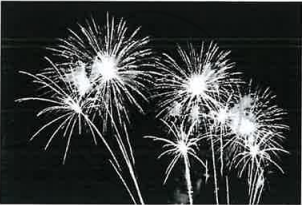Advertisements
Advertisements
Question
In what two ways is the yellow spot different from the blind spot?
Solution
Yellow spot is the region of brightest vision and contains maximum sensory cells whereas a blind spot contains no sensory cells and this is the point of no vision.
APPEARS IN
RELATED QUESTIONS
Match the following:
| Column I | Column II |
| (i) Myopia | (a) Converging power of eye lens becomes low |
| (ii) Hypermetropia | (b) Converging power of eye lens remains the same |
| (c) Converging power of eye lens becomes high |
Name two types of cells in the retina of an eye which respond to light.
What is the least distance of distinct vision for a normal human eye?
The animal which does not have eyes that look sideways is:
(a) Horse
(b) Chicken
(c) Lion
(d) Fish
The region in the eyes where the rods and cones are located is the
Sometimes you remember a vivid picture of a dream you saw. What is the role of your eyes in this experience?
The figure below compares a part of our eye with a part of a photographic camera.

Name the corresponding parts of the eye the camera shown here that are comparable in function.
We see advertisements for eye donation on television or in newspapers. Write the importance of such advertisements.
What is the function of iris and the muscles connected to the lens in human eye?
Give the main function of the following:
Retina
Sketch and label V.S. of a human eye.
What are the functions of tears?
Differentiate between:
Retina and Choroid.
Mention, if the following statement is True or False
The least distance of distinct vision for the human eye is 25 cm
Choose the Odd One Out:
Complete the following sentence with appropriate Word
The photoreceptor cells of the retina sensitive to colour are:
Long answer question
Draw the neat labelled diagram of the Sectional view of the human eye.
Write an Explanation.
Farthest distance of distinct vision
The change in the focal length of an eye lens in human beings is caused by the action of ______.
Chris was watching the display of fireworks in the sky.

- Trace the path of the light rays using the following terms:
Fovea, Lens, Conjunctiva, Pupil, Cornea. - Name the nerve that carries the impulse for vision to the brain.
